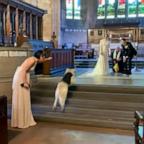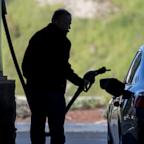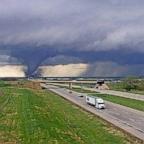The Hunt for Damage on Endeavour
Astronauts to guide robotic arm to scan damage on underside of Endeavour.
Aug. 12, 2007 — -- Astronauts are using the shuttle's robotic arm to get a better look at a damaged area on Endeavour.
Video of Endeavour's launch shows a grapefruit-sized piece of foam coming off a bracket on the fuel tank, then bouncing off a strut farther down and ricocheting into Endeavour, said John Shannon, chairman of the mission management team.
The brackets hold the long fuel feed line to the tank, and the struts connect the tank to the shuttle for launch. Ice tends to form near the brackets, and engineers believe ice caused the foam to pop off at liftoff.
Astronaut Cady Coleman, who heads the robotics program for the astronaut office, said while using the robotic arm to inspect the damage is a delicate procedure, the crew knows what they are doing.
"They've practiced this before in their training," Coleman said, "and it has been pre-planned. They know how to get their head ready and proceed safely."
Shannon said foam has come loose from the brackets on at least three of the four previous shuttle flights, and that worries Shannon.
"It's a little bit of a concern to us because this seems to be something that has happened frequently," he said.
The foam hit underneath Endeavour's right wing, and gouged a three-inch-by-two-inch nick in the shuttle's heat tiles, which protect the orbiter from the searing heat of re-entry.
The foam hit was bad luck for NASA, but where it hit may turn out to be good luck, because under the damage is a structural spar that could act as a heat sink and protect the shuttle, which means NASA may not have to send a spacewalker out under the shuttle to repair Endeavour in orbit.
NASA has struggled with foam loss from the external tank since the space shuttle began flying in 1981 -- until Feb. 1, 2003. A 1.67-pound piece of foam broke off Columbia's external tank during launch and smashed into the shuttle's left wing almost 82 seconds in. It punched a hole in the wing, which allowed super-hot gases to penetrate the wing as the shuttle re-entered the atmosphere. Columbia broke up over Texas, killing its crew of seven.




